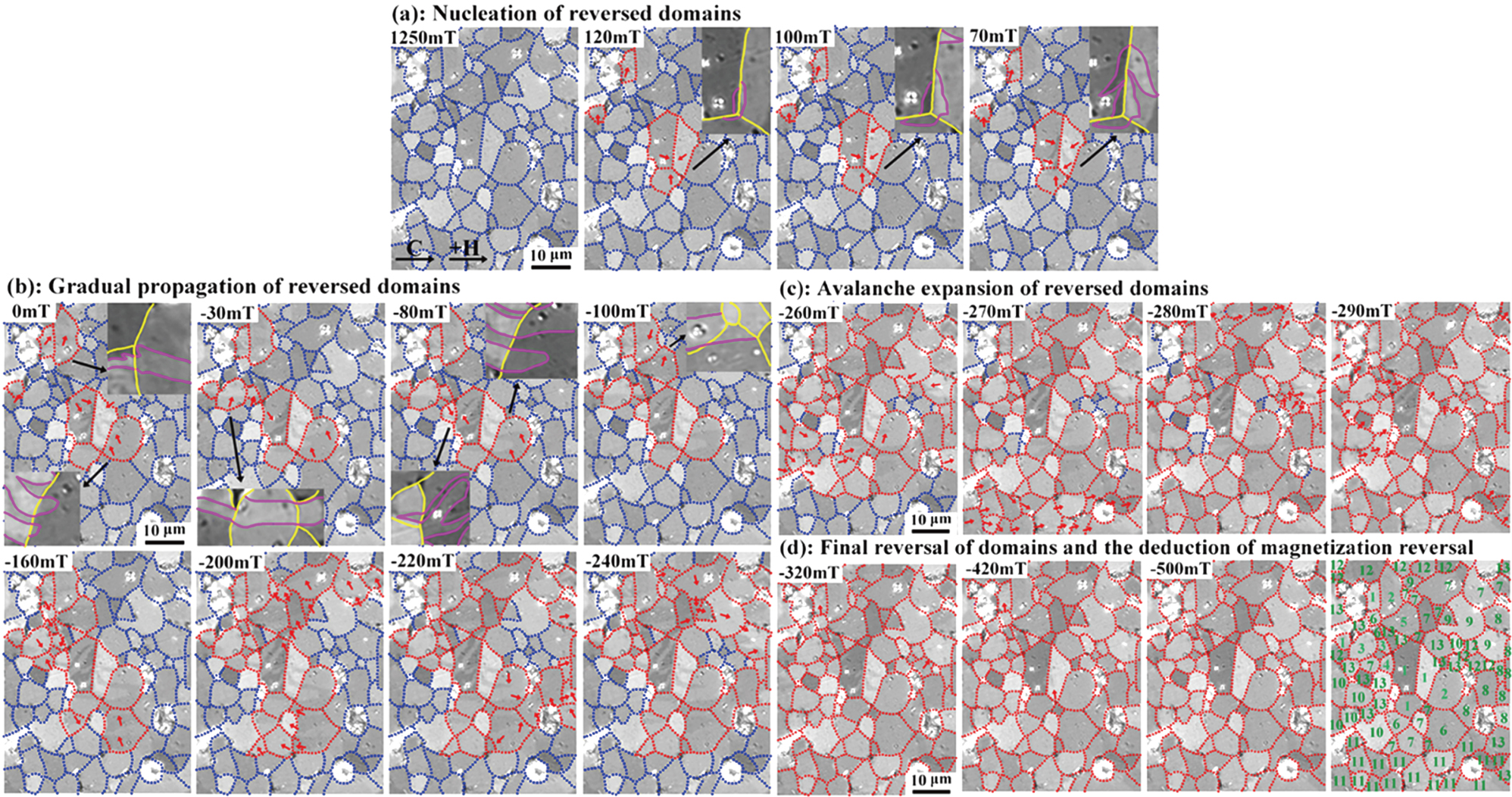|
The in situ magnetization reversal process of the MMP magnet with 18 wt.% La–Ce, recorded by magneto-optical Kerr images. The external magnetic field is applied to the specimen along the c-axis (in-plane). Upon decreasing the external field and afterwards increasing the reversal field, the magnetization reversal can be divided into four steps: (a) nucleation of reversed domains near the GBs at 120 mT, which then grow within the grain and thus become more visible at 100 mT and 70 mT. (b) Gradual propagation of reversed domains with the increasing opposite field (
∼
−
240
mT
). Small nuclei with reversal magnetization tend to grow. Once the nucleation arrives at the GBs that adjacent to another grain, the successive nucleation in the neighboring grain starts. (c) Avalanche expansion of reversed domains. The domain structure is stable below −240 mT, at higher reversal fields, the nucleation and propagation of reversed domains occur abruptly along the GB, leading to a magnetization cascade. (d) Final reversal of domains, and the corresponding map with 1–13 labeled in green, referring to the sequence of reversed domains deduced from the whole reversal progress. At −320 mT, all the present grains have reversed domains within. However, two obvious multi-domain grains remain without being totally reversed until −500 mT (exactly labeled as “1” grains, meaning that they firstly embed with the reversed nucleation and finally occupy the most strong pinning force against the motion of reversed domains).[22]
|
